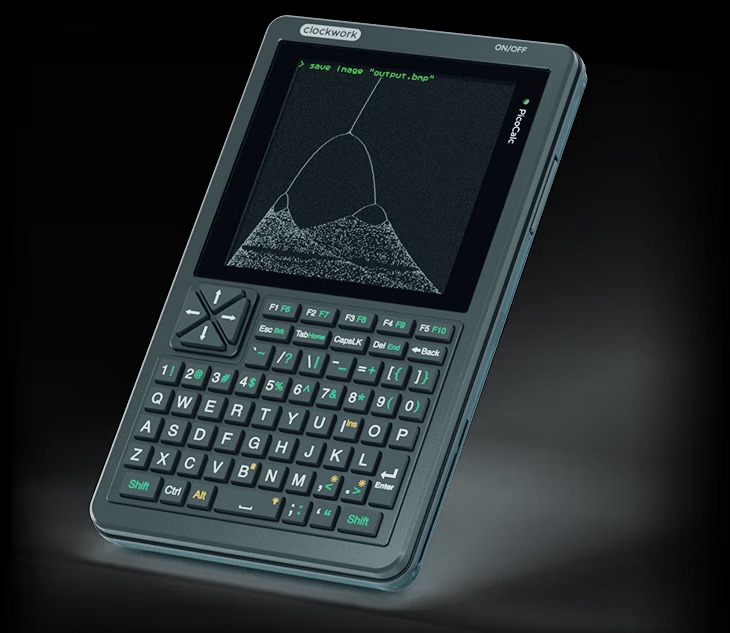Picocalc. Not sure why but I love it
It was April 21st, not sure where I found that company called ClockworkPi.
When I saw that thing called PicoCalc, a small microcomputer (is that still a word?) in calculator-like form factor I was like "I want it now".
Not sure why, but it connected retrocomputing vibes with embedded programming in a way that I just loved.

With a price of $75 (plus shipping...) I just bought it.
Then (then!) I thought that maybe I should check whether the company is valid, where is it located and who's the guy (or gal). Information was sparse. ClockworkPi is an US-registered LLC, but the only contact I found was some lawyer I think? People on company forum and Github account were just a bunch of nicknames, with small bits of information leading to China. But why so secretive? There's nothing wrong to design and manufacture electronics in China. OK, so most probably I'll never know the story behind their devices - all of each were pretty cool.
I found no red flags on the forum nor /r/ClockworkPi, so I felt better about my money. Then, there was a When should deliveries of PicoCalc start? megathread that made me worried. All these comments about Trump's tariffs causing global shipping delays. But I'm in Europe, they are in China, so there should be no problem, right? right?? After 30 days of wait I sent an email. Response was quick: Hi, Sorry for the waiting. We are working on your order at this moment. Won't take much longer. Signed: Alex Duan Ok. Then still nothing. After several days I asked once again. The answer from "Alex" was once again quick: Hi, Your order has been collected by our shipping agency, tracking number will be provided soon. And then, on June 18 I got "Your order is on its way", with information from FedEx confirming that indeed, a package from "HONG KONGHK" (I knew it!) and that the scheduled delivery date would be "Tue, 06/24/2025 Before 10:00pm". That's less than a week! From Hong Kong to Central Europe? No way! There was a delay - one day. Customs went like a breeze. I was in awe. Package was tidy and professional, a little bit beaten on one of the corners but nothing serious.
I already saw several unboxing / assembly videos so I knew the device is a kit that needs to be built. Anxious and excited I compared installation instructions with that video and I decided I'm ready. Actually, I wasn't as I didn't have 16550 batteries as I wasn't 100% sure that the thing is real. Still, I followed steps from that video, including an advice to NOT remove protective film from the display until I'm ready with protective glass - which saved me from having my fingerprints in places that are impossible to be cleaned afterwards. Inserting SD card at the very end is also a good idea.
Everything went smoothly. I tried connecting an USB-C charger - and the device worked! I was greeted with a BASIC prompt, like on some 8-bit machine from the eighties. Green font on black screen.
I got some example BASIC programs run - everything was just fine. There were some other firmware files on a card (wtf is FUZIX?) but I decided to not flash it yet and instead I decided that apart from a battery I'll need RPi Pico 2WH so that I have WiFi & Bluetooth plus extra memory. There's not such thing as Pico 2WH (H for version with pins). I need to buy pin headers. And a breadboard, so that soldering gets straight. OK, fine.
I knew I wanted to program that device - but what language should I use? I'm old enough to know BASIC and it's kind of a default environment for PicoCalc, but I don't think I really want to get to that river - again.
Then there's FUZIX - Unix-like OS. Programming in C with Unix API sounds tempting, but there's no on-device development stack and I'd like to do at least SOME programming on a device - or so I think.
uLisp? No, thanks. Not sure why, but Lisp and Logo are the languages I avoided in retro days and let's keep it that way.
Micropython. After seeing some introductory videos I'm pretty sure that's the direction I'll follow. Plus maybe some C programming in Pico SDK. Later.
I installed Micropython from ClockworkPi git and begun tinkering. Mandelbrot demo was much, much faster than it's BASIC counterpart. Good.
Next step will be to install that Thonny thing. It seems to be a simple, convenient Python IDE for embedded devices.
(end of part 1)